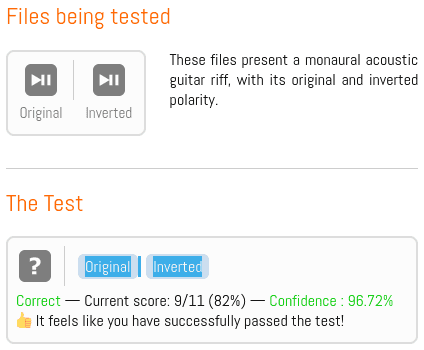Ghoostknight
Headphoneus Supremus
yea its definitely not a "night an day" difference with these samplesI tried to pass the audiocheck test as well but since I couldn't convince myself I hear a difference, I ended up just guessing.
most of the time i notice inverse phase stuff mainly with bass stuff, i think usual instruments like a normal guitar, dont get that often polarity switched either
but for me is clear: with the right material you can notice it, now its up to debate whether this might make a difference in your day to day listening
But i also feel like, atleast this is how i do it, when you got new gear, figure out once what is correct polarity in your system, and set it and forget it, imo there is no reason why someone would "want" inverse phase, i think most that actually have inverse phase in their system are simply not aware and even if they care, they will find many references to people saying it doesnt matter
hmm interesting, i never tested with a saw wave but nice to hear the impulse tones work for others too, the impulse tone is probably more "like music"I got a 12/12 on that as well but to my ears the saw wave was easier. For the saw wave test, I didn't have to reference A and B, I just kept playing X and knew immediately if X is A or B. For the impulse, I had to play A and B before deciding on X to get consistent results.
i guess a saw wave has a even "sharper" impulse characteristic
in theory, only the first half sinuswave "should" matter with absolute phase, i think with transients it becomes apparent, tho i wonder why i hear such a consistent difference with the more or less "static" bass guitar in the music sample i posted above but maybe because it consistent of many "transients" troughout
Last edited:











